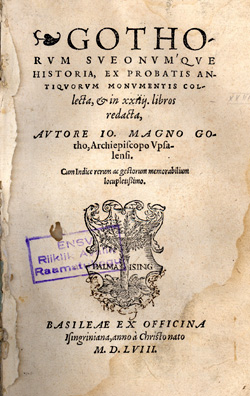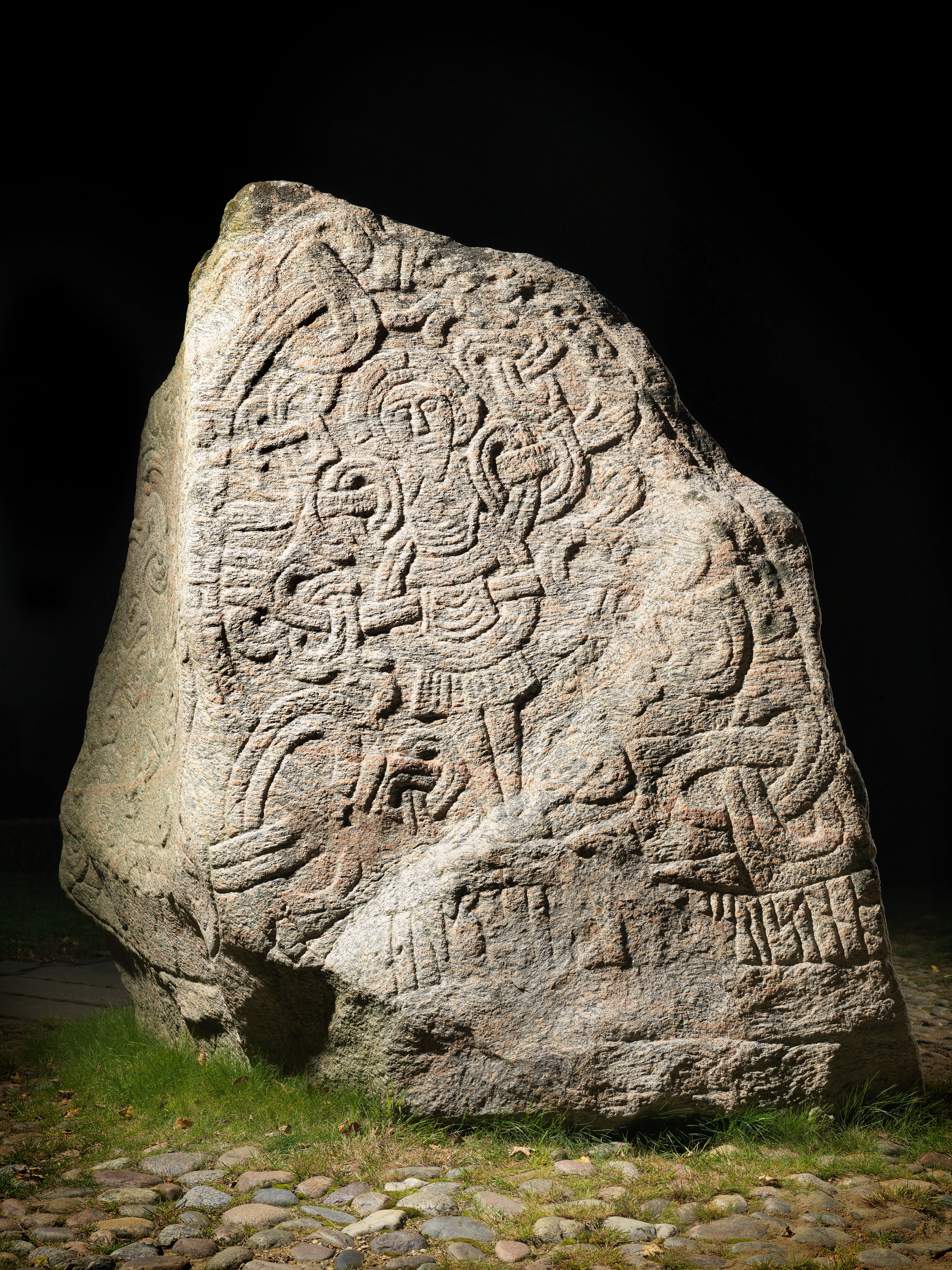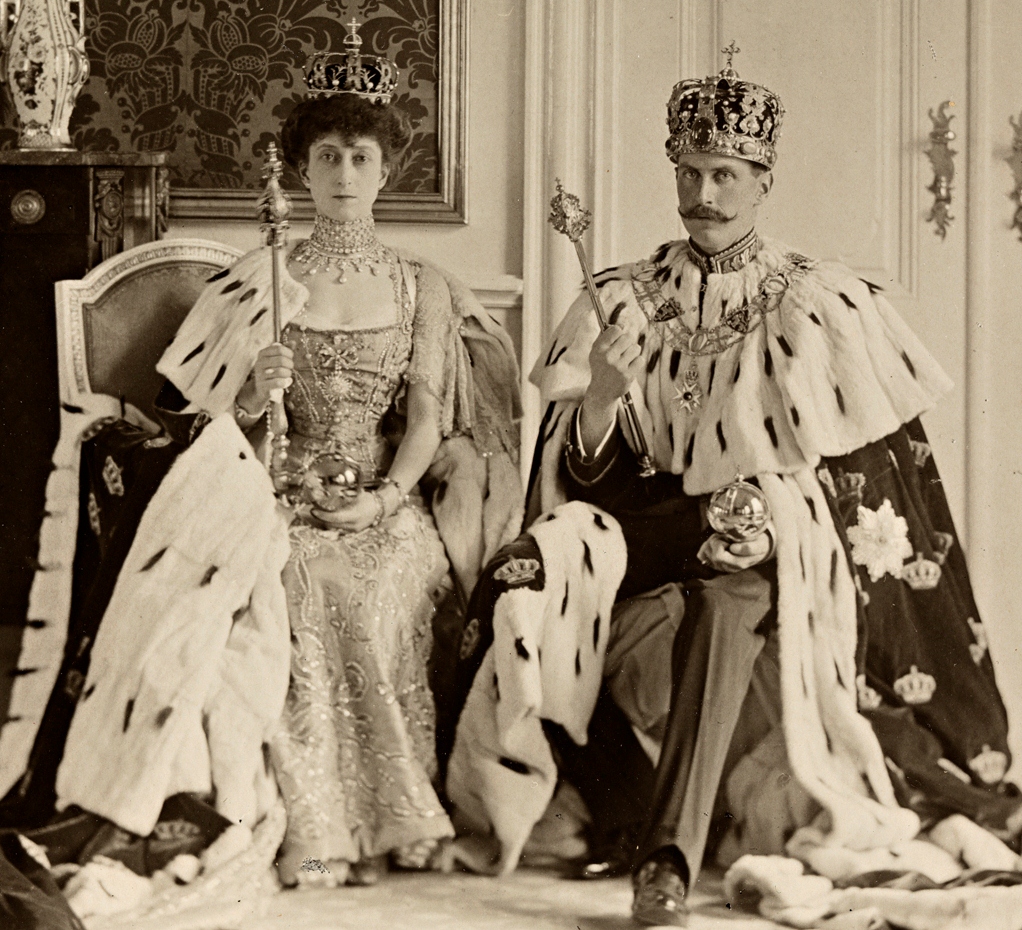|
Eric The Pomeranian
Eric of Pomerania (1381 or 1382 – 24 September 1459) was the ruler of the Kalmar Union from 1396 until 1439, succeeding his grandaunt, Queen Margaret I. He is known as Eric III as King of Norway (1389–1442), Eric VII as King of Denmark (1396–1439) and has been called Eric XIII as King of Sweden (1396–1434, 1436–39). Later, in all three countries he became more commonly known as ''Erik av Pommern'' (Eric of Pomerania), a pejorative intended to point out that he belonged elsewhere. Eric was ultimately deposed from all three kingdoms of the union, but in 1449 he inherited one of the partitions of the Duchy of Pomerania and ruled it as duke until his death in 1459. Succession background Eric was born in either 1381 or 1382 in Darłowo, Pomerania (Poland). Born Bogusław, Eric was the son of Wartislaw VII, Duke of Pomerania, and Maria of Mecklenburg-Schwerin. Margaret I, who ruled the kingdoms of Denmark, Norway, and Sweden, wanted her realm to be unified and peaceful and m ... [...More Info...] [...Related Items...] OR: [Wikipedia] [Google] [Baidu] |
Pomerania-Stolp
The Duchy of Pomerania-Stolp, also known as the Duchy of Stolp, and the Duchy of Słupsk, was a feudal duchy in Farther Pomerania within the Holy Roman Empire. Its capital was Słupsk. It was ruled by the Griffin dynasty. It existed in the High Middle Ages era from 1368 to 1478. Background The Duchy of Pomerania was partitioned several times to satisfy the claims of the male members of the ruling House of Pomerania dynasty.Kyra T. Inachin, Die Geschichte Pommerns, Hinstorff Rostock, 2008, p.30, The partitions were named after the ducal residences: Pomerania-Barth, -Demmin, -Rügenwalde, -Stettin, -Stolp, and -Wolgast. None of the partitions had a hereditary character,Norbert Buske, Pommern, Helms Schwerin 1997, p.21, the members of the House of Pomerania inherited the duchy in common. The duchy thus continued to exist as a whole despite its division. Creation: Partition of 1368/72 After the death of Barnim IV of Pomerania-Wolgast in 1366, an armed conflict arose when B ... [...More Info...] [...Related Items...] OR: [Wikipedia] [Google] [Baidu] |
House Of Griffin
The House of Griffin or Griffin dynasty (german: Greifen; pl, Gryfici, da, Grif) was a dynasty ruling the Duchy of Pomerania from the 12th century until 1637. The name "Griffins" was used by the dynasty after the 15th century and had been taken from the ducal coat of arms. Duke Wartislaw I (died 1135) was the first historical ruler of the Duchy of Pomerania and the founder of the Griffin dynasty. The most prominent Griffin was Eric of Pomerania, who became king of the Kalmar Union in 1397, thus ruling Denmark, Sweden and Norway. The last Griffin duke of Pomerania was Bogislaw XIV, who died during the Thirty Years' War, which led to the division of Pomerania between Brandenburg-Prussia and Sweden. Duchess Anna von Croy, daughter of Duke Bogislaw XIII and the last Griffin, died in 1660. Name of the Dynasty The dynasty is known by two names, ''Pomerania'', after their primary fief, and ''Griffin'', after their coat of arms, which had featured a griffin since the late 12th centu ... [...More Info...] [...Related Items...] OR: [Wikipedia] [Google] [Baidu] |
Dick Harrison
Dick Walther Harrison (born 10 April 1966) is a Sweden, Swedish historian. He is currently a Professor of History at Lund University. His main areas of interest are the European Middle Ages, including the medical history of the period and the history of slavery. Harrison regularly writes articles for the Swedish journal ''Populär Historia'' (Popular History). He has also written popular historical works and, during Spring 2010, a blog covering the history of monarchs and monarchies with emphasis on the Swedish monarchy. Harrison regularly gives lectures to the general public on a broad range of historical topics. Harrison is the editor-in-chief of a comprehensive series about Swedish history published by Norstedts with the first volume released in September, 2009. The Swedish TV channel TV4 has made a companion television series for which Harrison is the historical consultant and co-host along with Martin Timell. The TV series has 12 episodes of which the first six aired on TV4 ... [...More Info...] [...Related Items...] OR: [Wikipedia] [Google] [Baidu] |
Pejorative
A pejorative or slur is a word or grammatical form expressing a negative or a disrespectful connotation, a low opinion, or a lack of respect toward someone or something. It is also used to express criticism, hostility, or disregard. Sometimes, a term is regarded as pejorative in some social or ethnic groups but not in others, or may be originally pejorative but later adopt a non-pejorative sense (or vice versa) in some or all contexts. Etymology The word ''pejorative'' is derived from a Late Latin past participle stem of ''peiorare'', meaning "to make worse", from ''peior'' "worse". Pejoration and melioration In historical linguistics, the process of an inoffensive word becoming pejorative is a form of semantic drift known as pejoration. An example of pejoration is the shift in meaning of the word ''silly'' from meaning that a person was happy and fortunate to meaning that they are foolish and unsophisticated. The process of pejoration can repeat itself around a single concept, ... [...More Info...] [...Related Items...] OR: [Wikipedia] [Google] [Baidu] |
King Of Sweden
The monarchy of Sweden is the monarchical head of state of Sweden,See the Instrument of Government, Chapter 1, Article 5. which is a constitutional and hereditary monarchy with a parliamentary system.Parliamentary system: see the Instrument of Government, Chapter 1, Article 1. There have been kings in what now is the Kingdom of Sweden for more than a millennium. Originally an elective monarchy, it became a hereditary monarchy in the 16th century during the reign of Gustav Vasa, though virtually all monarchs before that belonged to a limited and small number of families which are considered to be the royal dynasties of Sweden. Sweden in the present day is a representative democracy in a parliamentary system based on popular sovereignty, as defined in the current Instrument of Government (one of the four Fundamental Laws of the Realm which makes up the written constitution). The monarch and the members of the royal family undertake a variety of official, unofficial and other re ... [...More Info...] [...Related Items...] OR: [Wikipedia] [Google] [Baidu] |
Historia De Omnibus Gothorum Sueonumque Regibus
The ''Historia de omnibus Gothorum Sueonumque regibus'' (''The history of all Geatish and Swedish kings'') is a posthumously published, partly pseudo-historical work by Johannes Magnus, Sweden's last Catholic archbishop. In 1554 (ten years after his death) it was published in Latin by his brother Olaus Magnus. The ''Historia'' was implicitly critical of King Gustav Vasa, who had introduced the Protestant Reformation in 1527 and caused the exile of Johannes Magnus. It was nevertheless used widely by Gustav Vasa's sons and successors, to whom it had been dedicated, since it extolled the glorious past of the Swedish kingdom. In particular, the sons used the (fictitious) king-list which began with Magog, grandson of Noah. As a consequence, Eric XIV and Charles IX adopted much higher regnal numbers than warranted by the historical sources. A Swedish translation was published by Ericus Benedicti Schroderus in 1620. A modern Swedish version, translated by Kurt Johannesson and with comme ... [...More Info...] [...Related Items...] OR: [Wikipedia] [Google] [Baidu] |
Eric XIV
Eric XIV ( sv, Erik XIV; 13 December 153326 February 1577) was King of Sweden from 1560 until he was deposed in 1569. Eric XIV was the eldest son of Gustav I (1496–1560) and Catherine of Saxe-Lauenburg (1513–1535). He was also ruler of Estonia, after its conquest by Sweden in 1561. While he has been regarded as intelligent and artistically skilled, as well as politically ambitious, early in his reign he showed signs of mental instability, a condition that eventually led to insanity. Some scholars claim that his illness began early during his reign, while others believe that it first manifested with the Sture murders. Eric, having been deposed and imprisoned, was most likely murdered. An examination of his remains in 1958 confirmed that he probably died of arsenic poisoning. Early years Eric XIV was born at Tre Kronor castle, the morning of 13 December 1533. His mother died before his second year. In 1536, his father, Gustav Vasa, married Margaret Leijonhufvud (1516 ... [...More Info...] [...Related Items...] OR: [Wikipedia] [Google] [Baidu] |
Landskrona
Landskrona (old da, Landskrone) is a town in Scania, Sweden. Located on the shores of the Öresund, it occupies a natural port, which has lent the town at first military and subsequent commercial significance. Ferries operate from Landskrona to the island of Ven, and for many years there was also a connection to Copenhagen. Landskrona is part of the Øresund region. It is the seat of Landskrona Municipality. Landskrona is also the name of a district in Landskrona Municipality which is slightly smaller than the urban area. History The city of Landskrona is usually claimed to have been founded in 1413 by the King of Denmark, Eric of Pomerania, as a trading city intended to compete with Danish towns under the control of the Hanseatic League. There is however evidence found in the Danish National Archive, which mention the town by the name "Landzcrone" already in 1405. The site occupies one of a few natural harbours in Scania, which at that time was part of Denmark. At the tim ... [...More Info...] [...Related Items...] OR: [Wikipedia] [Google] [Baidu] |
King Of Denmark
The monarchy of Denmark is a constitutional political system, institution and a historic office of the Kingdom of Denmark. The Kingdom includes Denmark proper and the autonomous administrative division, autonomous territories of the Faroe Islands and Greenland. The Kingdom of Denmark was already consolidated in the 8th century, whose rulers are consistently referred to in Franks, Frankish sources (and in some late Frisians, Frisian sources) as "kings" (). Under the rule of King Gudfred in 804 the Kingdom may have included all the major provinces of medieval Denmark. The current unified Kingdom of Denmark was founded or re-united by the Vikings, Viking kings Gorm the Old and Harald Bluetooth in the 10th century. Originally an elective monarchy, it became hereditary monarchy, hereditary only in the 17th century during the reign of Frederick III of Denmark, Frederick III. A decisive transition to a constitutional monarchy occurred in 1849 with the writing of the first democrat ... [...More Info...] [...Related Items...] OR: [Wikipedia] [Google] [Baidu] |
King Of Norway
The Norwegian monarch is the head of state of Norway, which is a constitutional and hereditary monarchy with a parliamentary system. The Norwegian monarchy can trace its line back to the reign of Harald Fairhair and the previous petty kingdoms which were united to form Norway; it has been in unions with both Sweden and Denmark for long periods. The present monarch is King Harald V, who has reigned since 17 January 1991, succeeding his father, Olav V. The heir apparent is his only son, Crown Prince Haakon. The crown prince undertakes various public ceremonial functions, as does the king's wife, Queen Sonja. The crown prince also acts as regent in the king's absence. There are several other members of the royal family, including the king's daughter, grandchildren and sister. Since the dissolution of the union between Norway and Sweden and the subsequent election of a Danish prince as King Haakon VII in 1905, the reigning royal house of Norway has been a branch of the Schleswig- ... [...More Info...] [...Related Items...] OR: [Wikipedia] [Google] [Baidu] |
Kalmar Union
The Kalmar Union (Danish language, Danish, Norwegian language, Norwegian, and sv, Kalmarunionen; fi, Kalmarin unioni; la, Unio Calmariensis) was a personal union in Scandinavia, agreed at Kalmar in Sweden, that from 1397 to 1523 joined under a single monarch the three kingdoms of Denmark, Sweden (then including most of present-day Finland), and Norway, together with List of possessions of Norway#Former dependencies and homelands, Norway's overseas colonies Norway retained none of its prior possessions, however. Christian I pledged the Northern Isles to Scotland as insurance for his daughter’s dowery in 1468; when the dowery wasn’t paid the islands transferred to perpetual Scottish sovereignty in 1470. Following the Union’s dissolution, all remaining overseas possessions brought into the Union by Norway became property of the Danish monarch; who retained ownership following the transfer of the Kingdom of Norway from the Danish crown to Swedish crown (discussed in further ... [...More Info...] [...Related Items...] OR: [Wikipedia] [Google] [Baidu] |
Roman Catholicism
The Catholic Church, also known as the Roman Catholic Church, is the List of Christian denominations by number of members, largest Christian church, with 1.3 billion baptized Catholics Catholic Church by country, worldwide . It is among the world's oldest and largest international institutions, and has played a prominent role in the history and development of Western civilization.Gerald O'Collins, O'Collins, p. v (preface). The church consists of 24 Catholic particular churches and liturgical rites#Churches, ''sui iuris'' churches, including the Latin Church and 23 Eastern Catholic Churches, which comprise almost 3,500 dioceses and Eparchy, eparchies located List of Catholic dioceses (structured view), around the world. The pope, who is the bishop of Rome, is the Papal supremacy, chief pastor of the church. The bishopric of Rome, known as the Holy See, is the central governing authority of the church. The administrative body of the Holy See, the Roman Curia, has its pr ... [...More Info...] [...Related Items...] OR: [Wikipedia] [Google] [Baidu] |






.jpg)